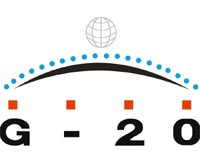| . |  |
. |
Miami FL (SPX) Jun 15, 2010 A team of dedicated South Florida researchers from the University of Miami's Cooperative Institute for Marine and Atmospheric Studies (CIMAS) and the National Oceanic and Atmospheric Administration's Atlantic Oceanographic and Meteorological Laboratory (NOAA/AOML) were determined to check on whether oil was, as predicted, being pulled into the Loop Current and carried toward the Dry Tortugas. The University of Miami's 96-foot catamaran the RV/F.G. Walton Smith had just completed a two-week National Science Foundation (NSF) sponsored cruise sampling the deep submerged plumes near the Deepwater Horizon well site. NOAA/AOML offered to pay for a few additional days, but the ship which is part of the University National Laboratory System, had to return to Miami on its tight schedule. The best they could do was extend the trip home by 18 hours. Using funding provided through CIMAS, a team was rapidly assembled that included UM and CIMAS oceanographers Tom Lee and Nelson Melo, as well as a group of scientists led by Michelle Wood, director of the NOAA/AOML's Ocean Chemistry Division. A sampling plan was pulled together using particle trajectories calculated by the UM Rosenstiel School of Marine and Atmospheric Science's Coastal Shelf Modeling Group, in combination with information provided by Roffer's Ocean Fishing Forecast Service (ROFFS) and remotely sensed images from UM's Center for Southeastern Tropical Advanced Remote Sensing (CSTARS). Using these sophisticated tools, the team decided that the most likely pathway for oil to reach the Florida Keys was for it to be pulled into a counterclockwise rotating frontal eddy in the northeast corner of the Loop Current, and then south along the eastern frontal zone of the Loop Current to the Dry Tortugas. They set out, borrowing surveying equipment from NSF scientists who were leaving the ship, including geological oceanographer Vernon Asper of the University of Southern Mississippi and Samantha Joye from the University of Georgia. As they traveled into the eddy field they saw areas of sheen, but no tar balls. Changing course to the south, however they found an area of strong flow convergence within a southward flowing jet that resulted from flow being pulled into the eddy. Knowing that this was just the type of oceanographic feature that would concentrate any floating material, including oil, they followed it. At about the same time a U.S. Coast Guard flight that had been sent to visually survey the area spotted what they thought could be an oil slick in the area and contacted the scientists aboard the Walton Smith to have the ship get a closer look at the slick. "As we approached, we found an extensive oil slick that stretched about 20 nm (20 miles) along the southward flowing jet which merged with the northern front of the Loop Current. The slick was made up of tar balls shaped like pancakes that went from the size of a dime to about 6 inches in diameter," said Tom Lee, UM Research Professor Emeritus and CIMAS scientist. "The combination of models and satellite images, along with our shipboard observations and ROFFS daily analysis had helped us to identify and study this previously unidentified oil plume located off Florida's southwest coast and heading toward the Tortugas." Scientists quickly set up net tows and lowered a CTD (Conductivity, Temperature and Depth) instrument equipped with oil sampling devices into the water, collecting samples of both the oil and saltwater in the area. As they headed further south they kept looking for other tendrils oil, but increased winds made spotting tell-tale sheens more difficult. As a result they could not confirm the exact length of this southern arm of the oil slick, which they had previously inferred from their data. Samples have been provided to federally sanctioned laboratories to confirm the source of materials gathered. "The good news is that the various approaches we are using to project its pathway seem to be yielding similar answers and guiding us properly. "We need to maintain our vigilance and expand our efforts to determine the degree of risk to unique downstream resources like the Dry Tortugas and Florida Keys National Marine Sanctuary, which are vital natural environments that we need to protect," said Peter Ortner, UM Marine Biology and Fisheries professor and director of CIMAS. "NOAA Cooperative Institutes, like CIMAS, continue to stand ready to assist their federal partners with the best available science to ensure that response and restoration resources are deployed as proactively and responsibly as possible during this national emergency." Earlier this month the National Oceanic and Atmospheric Administration (NOAA) announced its selection of UM to continue to lead its CIMAS partnership, which has been in place since 1977 to improve our understanding of climate, hurricanes, and marine ecosystems along the southeastern U.S. coast.
Share This Article With Planet Earth
Related Links Oil Spill at Miama Our Polluted World and Cleaning It Up
 Green groups accuse Canada of G8, G20 environment snub
Green groups accuse Canada of G8, G20 environment snubOttawa (AFP) June 14, 2010 Excluding climate change from the upcoming G8 and G20 summits would be a snub to poorer nations, environmentalists said on Monday, urging under pressure host Canada to add it to the agenda. Canada has invited Algeria, Egypt, Ethiopia, Malawi, Nigeria, Senegal and South Africa, as well as Colombia, Jamaica and Haiti to a special summit session. "If we invite those people and we don't talk ... read more |
|
| The content herein, unless otherwise known to be public domain, are Copyright 1995-2010 - SpaceDaily. AFP and UPI Wire Stories are copyright Agence France-Presse and United Press International. ESA Portal Reports are copyright European Space Agency. All NASA sourced material is public domain. Additional copyrights may apply in whole or part to other bona fide parties. Advertising does not imply endorsement,agreement or approval of any opinions, statements or information provided by SpaceDaily on any Web page published or hosted by SpaceDaily. Privacy Statement |